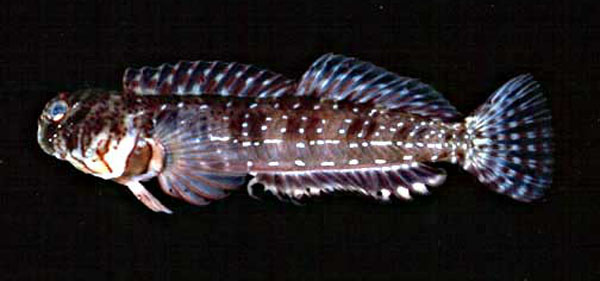| Blenniidae (Combtooth blennies), subfamily: Salariinae |
| 6.2 cm SL (male/unsexed) |
|
reef-associated; marine; depth range 0 - 3 m |
| Indo-Pacific: Andamans to Ducie Islands, north to southern Japan, south to Cocos-Keeling, Kermadec, and Rapa Islands; Belau and Marshall Islands in Micronesia. |
|
Dorsal spines (total): 13-13; Dorsal soft rays (total): 14-16; Anal spines: 2-2; Anal soft rays: 15-17 |
| Adults are found along rocky intertidal shorelines, benches, outer reef flats, and reef margins subject to some degree of wave action. Feeds on filamentous algae (Ref. 89972). Oviparous. Eggs are demersal and adhesive (Ref. 205), and are attached to the substrate via a filamentous, adhesive pad or pedestal (Ref. 94114). Larvae are planktonic, often found in shallow, coastal waters (Ref. 94114). |
|
Least Concern (LC); Date assessed: 25 March 2009 Ref. (130435)
|
| harmless |
Source and more info: www.fishbase.org. For personal, classroom, and other internal use only. Not for publication.
